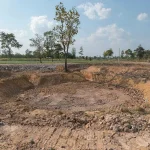Creating a small coy pond in your backyard can bring tranquility and beauty to your outdoor space. Whether you’re a seasoned DIY enthusiast or a beginner looking to embark on a new project, building a small coy pond can be a rewarding experience. In this guide, we’ll walk you through the steps to create your own serene oasis right in your backyard.
Step 1: Planning and Design
Before you start digging, it’s important to plan and design your coy pond. Consider the size of your yard, the location of the pond, and how you want it to fit into your overall landscape. Sketch out a design that includes the shape and size of the pond, as well as any additional features like rocks, plants, and lighting.
Step 2: Choosing a Location
When selecting a location for your coy pond, make sure it receives a good balance of sunlight and shade. Avoid placing it under trees that drop leaves, as this can make maintenance more challenging. Ensure that the spot is also easily accessible for adding water and performing routine maintenance tasks.
Step 3: Digging the Pond
Once you’ve planned and chosen a location, it’s time to start digging. Use a shovel or a small excavator to dig out the shape of your pond. Create shelves at different depths to provide a variety of areas for your coy to swim and hide. Make sure to create a gradual slope for easy access in and out of the water.

Credit: www.youtube.com
Step 4: Installing the Pond Liner
After digging the pond, it’s essential to install a pond liner to prevent water from seeping into the surrounding soil. Choose a high-quality pond liner that is durable and puncture-resistant. Carefully lay the liner in the hole, making sure to smooth out any wrinkles or folds.
Step 5: Adding Water and Filtration
Once the pond liner is in place, fill the pond with water. Install a filtration system to keep the water clean and clear for your coy. You can choose from a variety of filtration options, including biological filters, mechanical filters, and UV clarifiers, depending on the size of your pond and the number of fish you plan to have.
Step 6: Adding Rocks and Plants
To enhance the natural look of your coy pond, add rocks and aquatic plants around the edges. Rocks can provide hiding spots for your fish and create a more natural habitat. Choose a variety of plants, such as water lilies, lotus, and water hyacinth, to help oxygenate the water and provide shade for your coy.
Step 7: Adding Fish
Once your pond is set up and running, it’s time to add your coy. Make sure to acclimate them to the water temperature before releasing them into the pond. Start with a small number of fish to allow the pond to establish a natural balance before adding more. Monitor the water quality regularly to ensure a healthy environment for your fish.
Step 8: Maintenance and Care
Regular maintenance is key to keeping your coy pond healthy and beautiful. Remove debris, such as leaves and algae, from the water surface regularly. Test the water quality and adjust the filtration system as needed. Trim and prune plants to prevent overgrowth and maintain a balanced ecosystem.
Step 9: Enjoying Your Coy Pond
Now that your small coy pond is complete, take the time to sit back, relax, and enjoy the tranquility it brings to your outdoor space. Watch your fish swim gracefully, listen to the soothing sounds of the water, and appreciate the beauty of your own little piece of nature right in your backyard.

Credit: iowawaterscapes.com
Conclusion
Building a small coy pond can be a fulfilling project that adds a touch of serenity to your backyard. By following these steps and investing time and effort into planning, designing, and maintaining your pond, you can create a beautiful and harmonious aquatic environment for your coy to thrive in. So, roll up your sleeves, grab your shovel, and start building your own small coy pond today!



